How to keep an open mind and avoid reverting to pre-programmed personal responses when learning, teaching and making music
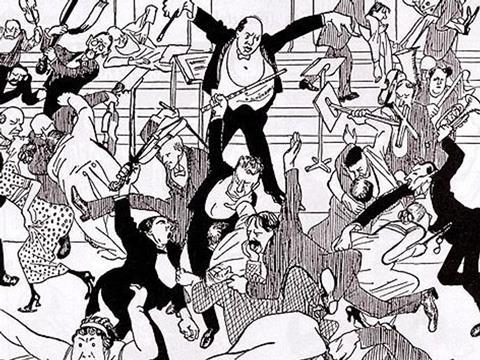
Discover more Featured Stories like this in The Strad Playing Hub
When you talk about performance, education, and politics you inevitably get different opinions often determined by where the person is coming from in the first place. In music, you might consider the reaction in Paris to the Rite of Spring where half the audience ripped up their seats and threw them in protest while half of the audience cheered the performance. The key element, as Stravinsky observed, was that neither group really listened to his music because their opinions were already set and their responses programmed. The question is, how can two people walk away from a musical performance with such different perspectives, despite having the same information? I suppose that in many ways the different perspectives should not come as a surprise because, in this musical example, our ability to connect with the subtle nuances of a performance which engenders strong feelings, also inspires a strongly subjective reading of its content. Half of the audience perceived Stravinsky’s music as the death knell of tradition while the other half saw the promise of an exciting future.
What the reception to Stravinsky shows is how strong identity politics and our sense of self-definition are when it comes to resolving the world and the described definitional issues. The socio-economic foundations that influence our ideas and expressive creativity are woven into our country and can be found with extreme consequence across the United Kingdom. Music education and arts experiences are defined geographically and economically with much of our population marginalised. Ensembles such as Thirteen North, Manchester Collective and the Scottish Ensemble strive to connect to a more diverse audience by disassembling the traditions of classical music. But concert halls are not full, and the question remains, is it the performance norms, the concert venue and concert dress, or rigid seasonal programming which alienates and marginalises? Or is the problem rooted in the institutions which shape our identities and keep us in a narrow corridor of interpretation and connection?
Our schools have become so adept at getting pupils through exams and into university courses that it has relieved the pressure on the rest of society to do something real about the quality of our education and music provision. We accept those who are failing in or disenfranchised by our education system and vulnerable communities are described in percentage terms as collateral damage. The consequence is a growing disparity between state and private education in the quality and provision of music and, consequently, a decline in classical music’s resonance and value to an increasingly diverse and socially conscious generation.
Read: Opinion: Why we should pay less attention to grades
Read: Blue Sky Teaching: Using creative approaches to refine students’ technique
This disparity has given rise to music centres and mass music education programmes, but economics continue to dominate. Music outreach hubs and charities, such as Sistema, while creating social change through music education, are nevertheless reliant on the wealth of the wider geographical region for their economic justification, although located in highly deprived areas. The quality of provision, which was already high in the area, increases even more. Higher quality of provision attracts funding and increased engagement which entrenches the disparity. Instead of decreasing the gap between the haves and have nots, these enrichment programmes often increase the gap because those who engage with the programme are more likely to be inclined towards maths, STEM, sport, or a musical instrument. Whereas someone who does not is unlikely to benefit from the programme because they were not interested in the first place.

Innovations are energies that can be put to whatever use we choose, but sometimes they turbo charge existing inequalities. An innovation that was intended to narrow a gap ends up widening the difference. The Covid lockdown is a classic example of this effect. The most affluent in society were disproportionately better off because they had the resources of modern technology to engage with continued online, music lessons. Simply put, people with access to technology benefitted the most.
Projects that seek to increase access and engagement through either a targeted approach or mass music education fail to address the negative effects of long-term, poor music education on the whole of society nor the disproportionate impact on vulnerable communities. In private schools, the conventional approach to the subject doesn’t draw attention to the important positive effects that music can have on pupils’ lives, instead reinforcing the social divide by aligning music with social class, achievement, or a narrative of culture. We confuse the severity of a problem with the visibility of a problem when, in fact, it is the visibility not severity which causes pressure. The Glasgow Barons, for example, work hard on increasing and exploring the visibility of the issues the Govan community face on a daily basis. It is an important reason why they are so successful. Visibility creates urgency and we need to inspire people to care and to think clearly about what they are caring about.
How do we come to a point of caring? We connect to what we know, what we have experienced or seen. The key is found in the process of learning, so it has meaning and relevance to one’s own life. In music we can connect to a musical conversation to adapt and build on our ideas. When something happens in our lives, we adapt by stretching our mind and building new perspectives. However, different perspectives do not necessarily lead to improved comprehension. Rather, we must simplify our understanding so that we really perceive how we want to communicate an idea through our interpretation.
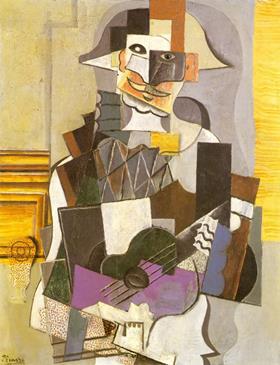
Oliver Wendell Holmes said that ’A person’s mind, once stretched by a new idea never regains its original dimensions.’ For me, the interesting part of learning is in making connections; taking something which I don’t know and connecting it with something I do know. When I teach, I explore different metaphors until I find one that connects to a pupil. A concept like cadence or sequence where I see no pathway will become clearer through repetition and connection. I start to see a path through the wilderness.
However, I am not talking about a methodology based around mechanical repetition or rote learning because I believe this leads to the problems we see in our educational institutions and organisations based around methodologies. We now live in an age where the amount of information that we are exposed to grows exponentially through the internet. It overwhelms traditional learning methods and bears no comparison to the world we lived in 30 years ago. The idea that the teacher or professor recites a fact and the class would repeat it by rote, as if in a circular pattern, is a method that is no longer fit for purpose.
’What you hear you forget, what you see you remember, what you do you understand.’
As a teacher, your role is to influence and inspire the person you are working with to connect their performance in a different way through entwining it to their own life and experiences. The answers are all around us but it is our personal engagement that truly informs our performance. For instance, when describing and exploring sound quality, it might be easier and more effective for a student to entwine the relationship between bow speed, bow pressure, and point of contact with the different fish found at various depths in our oceans, as seen in aquariums. The traditional ways of learning actually limit the way students learn and engage with information.

Our brains work visually, and we need to attach a place to the music to give it context in our imagination. In Jim Kwik’s book, Limitless, the ‘P’ stands for place in the acronym for a learning strategy called ‘PIE’ and describes the way in which we attach meaning to place. We can employ the meaning imbued in place to enrich our musical interpretation and give direction and solidity to our learning.
The ‘I’ is for imagine. I will never forget playing Schubert’s Mass in G within the context of the religious service at St Vitus Cathedral in Prague. The music took on a completely different meaning because it had context. We remember what we see, and we think and dream in pictures. A picture is worth a thousand words.
The ‘E’ is for entwine. How can we associate to or connect our sense of the place with our imagination? Put the place and image together. This is where exploring nature, culture, history, emotions, foods, and smells come into play. If we can inspire connection to the lives of the students through our teaching, we may be able to create a world of curious learners.
Hector Scott is a violin lecturer at the Royal Conservatoire of Scotland.
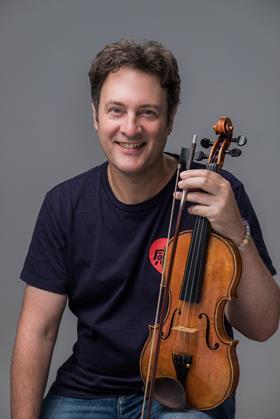
Read: Should Scale Systems Come With A Health Warning?
Read: ‘Hello you beautiful thing’: Hogarthian analysis in string playing
Read more Featured Stories like this in The Strad Playing Hub
The number one source for playing and teaching books, guides, CDs, calendars and back issues of the magazine.
In The Best of Technique you’ll discover the top playing tips of the world’s leading string players and teachers. It’s packed full of exercises for students, plus examples from the standard repertoire to show you how to integrate the technique into your playing.
The Strad’s Masterclass series brings together the finest string players with some of the greatest string works ever written. Always one of our most popular sections, Masterclass has been an invaluable aid to aspiring soloists, chamber musicians and string teachers since the 1990s.
American collector David L. Fulton amassed one of the 20th century’s finest collections of stringed instruments. This year’s calendar pays tribute to some of these priceless treasures, including Yehudi Menuhin’s celebrated ‘Lord Wilton’ Guarneri, the Carlo Bergonzi once played by Fritz Kreisler, and four instruments by Antonio Stradivari.


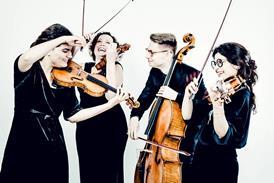
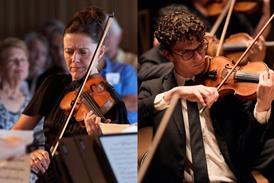









































No comments yet